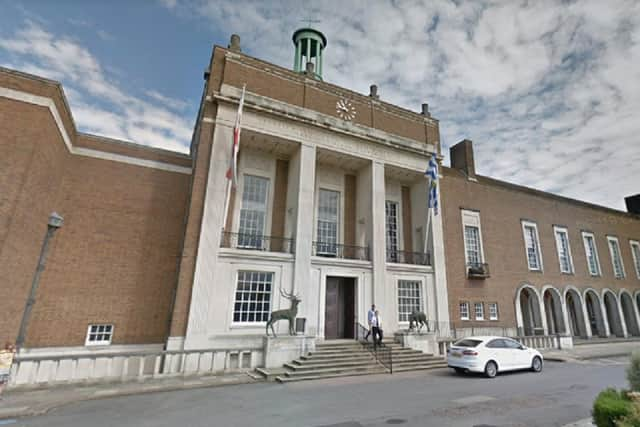Hertfordshire's new speed strategy accepts signs aren’t enough to slow motorists
and live on Freeview channel 276
Councillors have agreed to adopt a new highways strategy designed to ensure speed limits are ‘in keeping’ with their environments.
The county council’s new ‘speed management strategy’ aims to make the setting of speed limits in the county clear, transparent and consistent.
Advertisement
Hide AdAdvertisement
Hide AdAnd at its heart is a recognition that a speed limit sign alone is not enough to get motorists to slow down.


The strategy highlights engineering measures, technology – such as ‘speed indicator deices’ – and cameras as ways that could be used to impact on speed in the county.
And it is said to build on policies that put greater emphasis on the needs of more ‘vulnerable’ road users, such as pedestrians and cyclists.
On Monday, December 14, the strategy was adopted by the county council, after being backed by a meeting of the cabinet.
Advertisement
Hide AdAdvertisement
Hide AdAt the meeting executive member for highways and environment Cllr Phil Bibby told cabinet members that the strategy could mean that some roads would need to be redesigned to support lower speed limits.
And he said it could also mean that existing speed limits on some roads may be increased.
He also stressed the principle that traffic signs would not drive down speeds.
“We know from experience that in Hertfordshire when the wrong limits are applied to a road they are generally ignored and this in itself compromises safety,” he told cabinet members.
Advertisement
Hide AdAdvertisement
Hide AdAnd he later added: “We won’t put up speed limit signs alone and expect a significant behaviour change.”
Cllr Bibby acknowledged opposition to the strategy from groups who feared the strategy would make it harder to limit speeds to 20mph.
The strategy does refer to a council intention to investigate funding for ‘viable’ 20mph area schemes – and for new residential developments to ‘naturally encourage’ motorists to drive at 20mph.
But – without additional traffic calming – 20mph limits, it suggests, should generally be limited to areas where the existing average speeds are ALREADY 24mph or lower.
Advertisement
Hide AdAdvertisement
Hide AdAnd, as a result of this, campaigners have suggested the cost of additional traffic calming measures would make 20mph limits undeliverable.
In response to this Cllr Bibby told the cabinet he would be bidding for ‘not insubstantial funding’ as part of the council;s budget setting process to facilitate schemes over the next four years.
“You will be aware of the lobbying group twenty's plenty in objecting to the strategy focussing on added cost of installing traffic calming measures fearing this will make 20mph areas undeliverable,” said Cllr Bibby.
“But I can report that I am bidding in to the integrated plan for a not unsubstantial funding over next four years to enable us to facailitie a viable schemes.”
Advertisement
Hide AdAdvertisement
Hide AdThe report to the cabinet also outlined the outcome of public consultation on the strategy.
According to the report to the panel, public consultation on the strategy resulted in 573 responses.
Sixty-seven per cent of respondents provided at least one comment against the strategy.
But overall 52 per cent said they agreed with the strategy as proposed – with just 13 per cent who disagreed.
Asked specifically about the revised criteria for setting 20mph limits, 52 said they agreed.